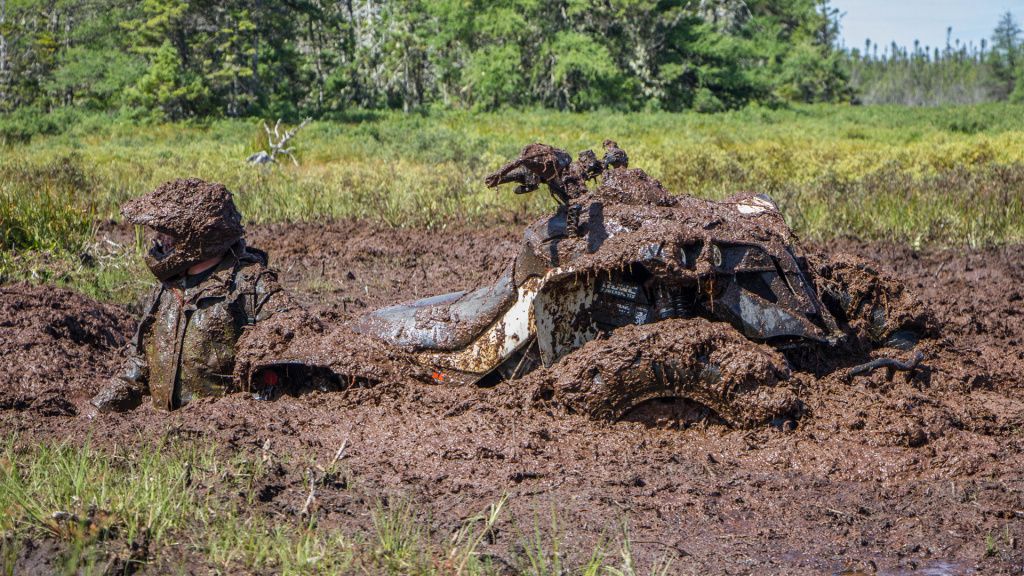How to Maintain ATV Throttle and Clutch Cable
ATV throttle and clutch cables don't need much maintenance, but what they do need is very important. It's also easy to do. So, make sure to include them in your ATV maintenance schedule. This post will tell you how to maintain ATV throttle and clutch cables for both reliability and safety.
WHAT GOES WRONG WITH ATV THROTTLE AND CLUTCH CABLES

We wouldn't expect it, but dirt, dust, mud, and bits of random debris collect in the cable sheathing as you ride, so you need to keep it clean and lubricated to ensure it works as intended. The damage this dirt can cause is preventable, reducing unnecessary and fun-delaying repairs, and it could make your ATV inoperable or uncontrollable if it happened on the trail.
Normal wear and tear from use can also damage your cables, so check them over time to also ensure they aren't coming apart rather than being dirty.
HOW OFTEN TO CHECK ATV THROTTLE AND CLUTCH CABLES
Most ATV riders will do fine checking their cables once a year. When you take your ATV out every so often like most of us do, it can't get but so dirty or worn so fast.
If you're lucky enough to be able to ride on a very regular basis, twice a year would be better.
The throttle and clutch may let you know they need attention as they start to require more work than you remember. If something doesn't feel right to you, check the cables.
HOW TO MAINTAIN ATV THROTTLE AND CLUTCH CABLES
Inspect them for signs of fraying or wear to see if they need to be replaced. This is too important. If you notice anything that looks less than sound, replace it.
At the same time, check the fittings for signs of damage or wear. They also need to be replaced.
You will have to at least partially remove the cables in order to clean them.
The owner's manual will tell you exactly how to do it for your ATV, but the tips below will give you an idea of what it's often like.
You'll need T-handle wrenches, probably 8mm or 10mm, cable lube, and a cable luber tool.

Clutch cables
There are two ways to begin removing the clutch cables.
Start at the clutch lever.
The first method: you can line the notch in the adjuster wheel up with the gap the clutch cable sits in. Loosen the cable enough so you get some slack in the cable so it can be moved.
The second and easiest method: remove the clutch lever with the T-handle wrench. A rubber guard will probably be in the way of the bolt. Push it out of the way and get to work. You can then pivot the clutch cable off.
If they just need to be cleaned and lubricated, you can do that now.
If you prefer to remove them completely or need to do so to replace them, you can find the other end of the cable near the actuating arm. The cable connects to it. The actuating arm is normally on the engine and can be found closest to wh ere your left foot rests while you ride.
Remove the nuts and the cable will have enough slack that you can pivot the actuating arm. Don't worry if the cable is in housing, it will come off with the cable.

Throttle cables
Depending on your ATV, you may have to remove the seat and gas tank to get to the throttle cable.
The next, or first, step is to remove the cover on the throttle body.
The cable is then held in place with a couple of nuts. Once they're loosened, you can slip the cable to the right.
This cable also doesn't have to be completely removed just to be cleaned and lubricated.
LUBRICATING THE CABLES

This process is the same for the throttle and clutch cables.
Insert the top end of the cable in to the cable luber tool. The tool needs to cover part of the sheathing and the bare cable.
Hold the cable up so gravity can be your friend.
Give the lube a few bursts, as many as needed to see lube exit the bottom of the cable. Don't use one continual spray as it can be too much too fast and send lube everywhere.
Wiggle the cable inside the sheathing to try to cover the cable completely.
REPLACING THE CABLES
You basically just do the reverse of what you did before.
When you reattach the clutch cable, tighten the adjuster wheel until the slack in the cable feels like what you're used to. You don't want it to be too tight or too loose because it can impact clutch performance.
Also, don't reattach the throttle cable too tight. Try to match what it was like before.

